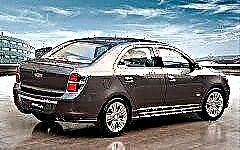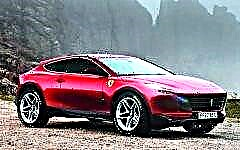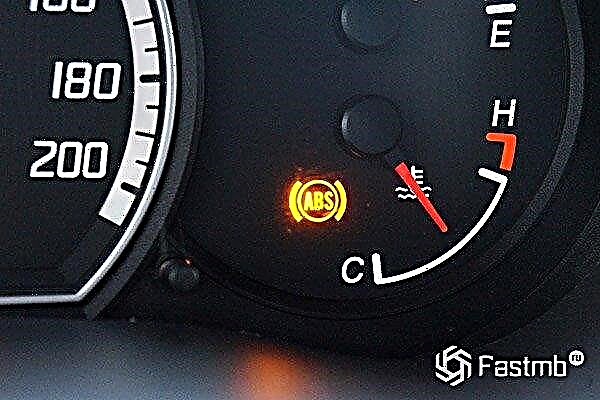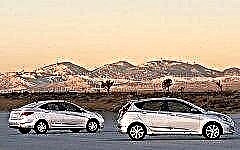

The content of the article:
- Classic of the genre - sedan
- Hatchback - road to the young!
The answer to this question will be the following question - "For whom are you interested?"
In the CIS countries, of course, sedans are in the lead - it is for these countries that many foreign manufacturers create new modifications in this body version that are practically not bought in Europe and the USA.
But hatchbacks are confidently conquering the market and taking a significant piece of the pie from the classic configuration. Sales of sedans in the Russian Federation are in the first place - it is approximately 32% of the total market, hatchbacks have up to 25%, slightly inferior to SUVs.
Experts predict that the compact range of urban hatchbacks could become the best-selling car in five years.
Newbie drivers really struggle with which car to choose. Consider the main differences between body structures, their advantages and possible disadvantages.
Classic of the genre - sedan

The sedan is comfortable, practical and stylish. External body shapes, interesting design of radiator grilles make the car presentable and expensive. It is in this design that all premium segment cars are produced. The traditional sedan body consists of three distinct volumes: interior, luggage compartment and hood volume. The trunk is always isolated from the passenger compartment.
The main feature of the 21st century sedan is the presence of the B-pillar (which is absent in the coupe body) and the size ratio. The length of the luggage compartment should be approximately equal to the length of the engine compartment. It is by the length of the body that the car belongs to a certain class.
The sedan is equipped with one or two (less often three) rows of seats, there is no lift door in the trunk.
The sedan category, in addition to the classic layout, includes the following types of bodywork:
- Hardtop. A distinctive feature is the absence of central pillars, side windows without outer frames.
- Fastback. A car with a sloping roof and an indistinct third, luggage compartment.
- Tudor. Two-door sedan. The most striking representative of the two-door sedan family can be considered the Chevrolet Monte Carlo.
- Long sedan. Today this is a very rare equipment - three rows of full-size seats are installed in the car.
A transitional model, which is put as an intermediate between a sedan and a hatchback, is a liftback. In terms of body shape, the car has overhangs similar to the hatchback, but the length of the luggage compartment is the same as in the sedan configuration.
The advantages of sedans
In addition to the representative look, sedans have a number of advantages that experienced drivers appreciate so much:
- The sedan provides better weight distribution. This means that at speed on the highway, the car has ideal stability - it is easier to control and maneuver. The front and rear axles are almost equally stressed due to the same volume of engine and luggage compartments.
- Large and comfortable lounge. This is well noticed by adult rear passengers.
- The salon is completely isolated from the trunk - this ensures silence and absence of extraneous odors.
- Greater parameter of passive safety of passengers. In an accident, the trunk serves as a buffer.
- In winter, the interior of the sedan warms up faster, in summer it cools faster - this leads to fuel economy.
But are there any downsides to a body structure like a sedan, and is it always beneficial to purchase a traditional and familiar model?
Disadvantages of a sedan
- 70% of the sedans produced have an average ground clearance of about 155 mm. This clearance will not allow the car to move on relatively light off-road. Often for sedans it is also a problem to leave a snow-covered parking lot. There are always exceptions - the first generation Skoda Octavia has a ground clearance of 170 mm.
- It is more difficult for novice sedan drivers to park. Large car sizes require little driving experience. Given the crowded city parking lots and roads, it is more difficult for the driver to find a place to park.
- The cost of a complete set of a sedan is 10-15% higher than a hatchback of the same model.
- The large volume of the sedan's trunk will not allow transporting long loads (panels, skirting boards, refrigerator, etc.).
But all these shortcomings are not perceived by connoisseurs of sedans as a big minus of the complete set. Many drivers over forty have a love for this car almost at the genetic level.
Hatchback - road to the young!

A hatchback (literally "rear hatch") is a car with a shortened rear overhang, a door, often with two, less often with one row of seats. The main distinguishing feature of the equipment is the length of the rear, which is always less than the length of the front. If it is equal to the front, formally the car cannot be classified as a hatchback, even if it has similar shapes.
For example, the Audi 100 in the Avant modification, with the external similarity of the body to the hatchback, has a rear overhang length equal to the front overhang and belongs to the station wagon class. But the Ford Scorpio Mk has a three-volume (classic sedan) body, a pillar in the center to support the roof, but the length of the rear overhang is slightly shorter than the front - the equipment belongs to the Hatchback class.
Benefits of hatchbacks
The main advantage of hatchbacks is considered to be better maneuverability in city traffic due to its smaller size than sedans. What other advantages does the complete set have:
- Less cost. Hatchbacks are more affordable than sedans and remain in most budget models.
- A voluminous trunk will allow you to transport bulky cargo - if you fold the rear seats, the useful volume increases by 3-4 times.
- The smaller size will make it easier to park in the city.
Hatchbacks are often chosen by young drivers who find it the most beginner-friendly model, despite the fact that hatchback drivers have a poorer view through the rear window than sedan drivers.
Disadvantages of hatchbacks
What are the disadvantages of this configuration, and are they so critical for the choice?
- Less comfort for back row passengers due to the trunk combined with the passenger compartment.
- It takes more time to warm the passenger compartment in winter and cool down in summer. This increases fuel consumption.
- Rear windows require a wiper and washer system.
- Less passive safety when hitting the trunk.
The sedan and hatchback are excellent examples of modern body modification that shouldn't even be in dispute. You need to choose a model based on the personal affections of the drivers.
Do not forget about the operating mode. Sedans are more presentable and are chosen as the main transport for the city and rare trips to the country.
Hatchbacks are a great family option, they are good to drive to work and get out into nature. In addition, there are some models of popular cars that are produced only in a hatchback body - for example, Mercedes-Benz Class A, Mazda 2, Fiat Bravo, Grande Punto, VAZ 2191, 1111, etc.











